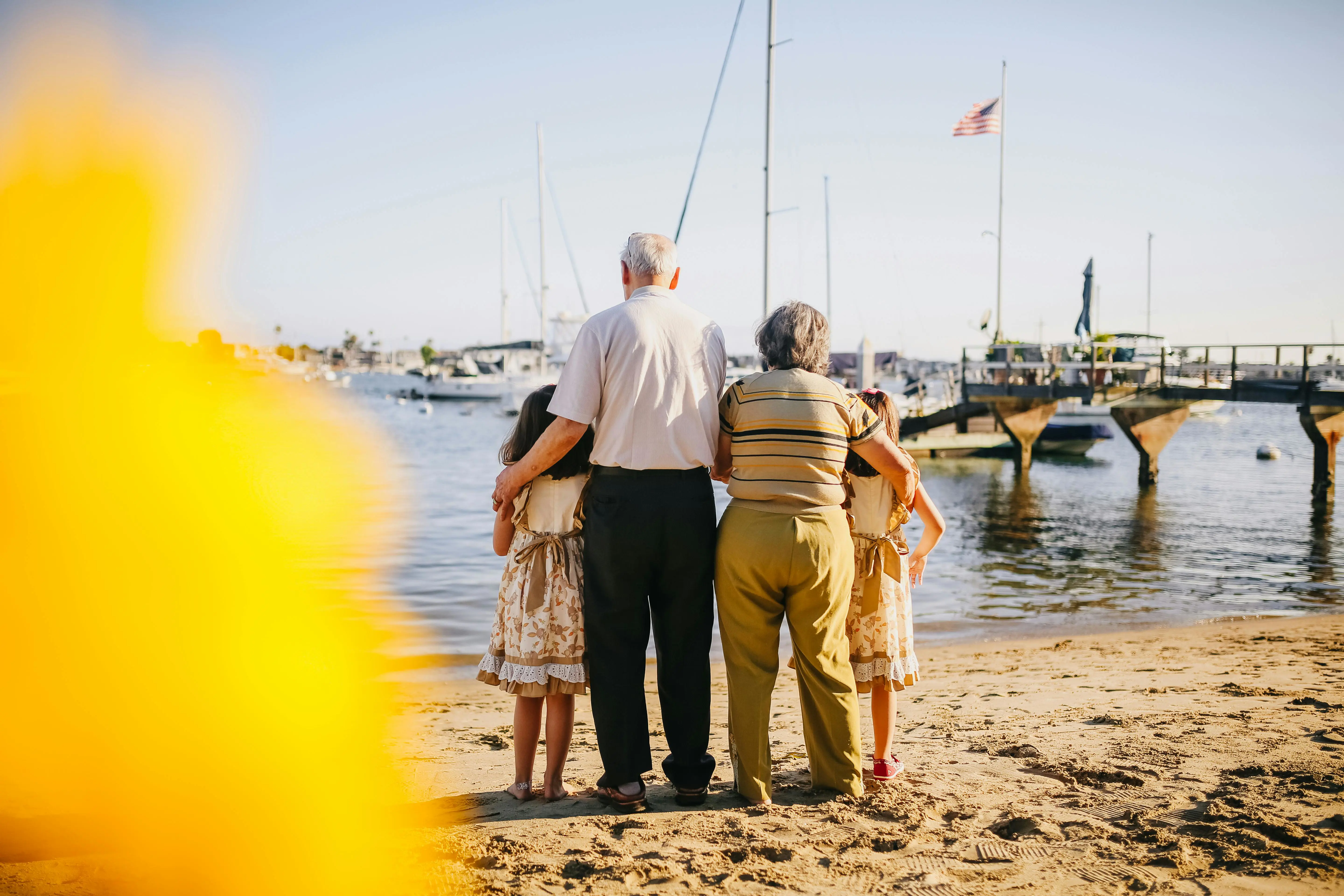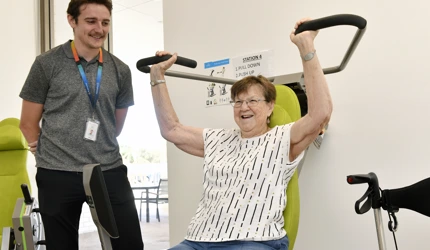Spending time outdoors or enjoying a family outing can be a wonderful way to reconnect and bring joy to your loved one’s day. But for older adults or those with mobility challenges, leaving the safety of their residence can also come with risks - especially the risk of falling.
The good news? Many falls are preventable with the right preparation and a few simple precautions.
Our experts at Brightwater; from physiotherapists to occupational therapists and podiatrists are sharing 10 essential tips that can help make your outings safer and more enjoyable.

Tip 1: Plan for Accessibility
A safe outing starts with careful planning by choosing safe venues with ramps and flat surfaces. Avoid stairs, steep ramps, uneven paths, gravel paths, or areas with slippery tiles. If you’re unsure, don’t hesitate to call ahead to the venue to check. Taking a few minutes to plan can significantly reduce the risk of a fall.
Also, consider avoiding peak hours where possible;crowded places can lead to distractions, rushed movements, and less stable footing.
Tip 2: Practice Safe Vehicle Transfers
Many falls happen before the outing even begins during the transfer into or out of a vehicle. This can be especially risky with high 4WDs, which are harder to access due to their elevated step height.
“Transferring in and out of a vehicle may seem simple, but it’s often where falls occur - especially with higher vehicles like 4WDs. That’s why we always recommend that families practice these transfers with the actual car that will be used on the day, and ideally, go through the routine physically with a physiotherapist ahead of time.” - Brightwater Senior Physiotherapist Suzanne Crosby
This hands-on practice ensures safety and boosts confidence for both the person at risk and their caregiver.
Tip 3: Use Mobility Aids Consistently
Always bring prescribed mobility aids such as a rollator, walking stick, or a walker even for short outings to a nearby café or supermarket.
Make sure the aid is in good condition, and that it’s adjusted correctly to suit your loved one’s height and posture.
If your loved one tires easily or has reduced endurance, consider bringing a lightweight, foldable wheelchair as a backup.

Tip 4: Wear the Right Footwear
The right footwear can make or break a well-planned outing. Choose shoes that are closed, non-slip, and provide proper support around the heel and arch. Avoid slippers, heels, or sandals that are loose or ill-fitting, as they offer little to no support for balance and stability.
Foot issues such as bunions, calluses, or ingrown toenails can also affect gait and increase fall risk, so regular podiatry check-ups are recommended for ongoing foot health.
Tip 5: Offer the Right Kind of Support
Walk on your loved one’s weaker or less stable side and let them set the pace. Instead of holding their arm or hand tightly, gently offer your arm for them to rest on. Offering your arm provides stability without compromising your own balance.
Avoid pulling or rushing, especially when navigating curbs or uneven ground.
Tip 6: Spot Environmental Hazards
Watch for hazards like wet floors, loose mats, cables, or poor lighting especially shiny or patterned surfaces that can confuse those with low vision. Keep environments clutter-free and avoid multitasking like using your phone or carrying too much while walking with your loved one.

Falls prevention is about preparation, not limitation. With a little planning and professional support, outings can be safe, enjoyable, and empowering.
Tip 7: Schedule Breaks and Rest Stops
Fatigue increases the risk of falls. Plan for rest stops, easy toilet access, and plenty of hydration. Shorter, more relaxed outings are not only safer, but often more enjoyable and stress-free for everyone.
Tip 8: Tailor to Cognitive and Sensory Needs
For those with dementia, hearing loss, or low vision, avoid noisy or overstimulating environments. Use calm, simple instructions and give extra time for responses. Familiar places reduce confusion and help your loved one feel safe and oriented. This could be a favourite café, local park, or well-known shopping centre.
Tip 9: Plan for Emergencies
Having a plan in place can make all the difference and help everyone feel more prepared and secure. Carry a mobile phone, emergency contact list, and any essential medications. Consider a fall detection pendant alarm. In case of a fall, stay calm, assess the situation, and seek help if needed, don't rush to lift them.
Tip 10: Strengthen with the Right Exercises
Staying strong and balanced is key to preventing falls. Tailored exercises prescribed by a physiotherapist can improve mobility and confidence while reducing fall risk.
Falls prevention is about preparation, not limitation. With a little planning and professional support, outings can be safe, enjoyable, and empowering.



